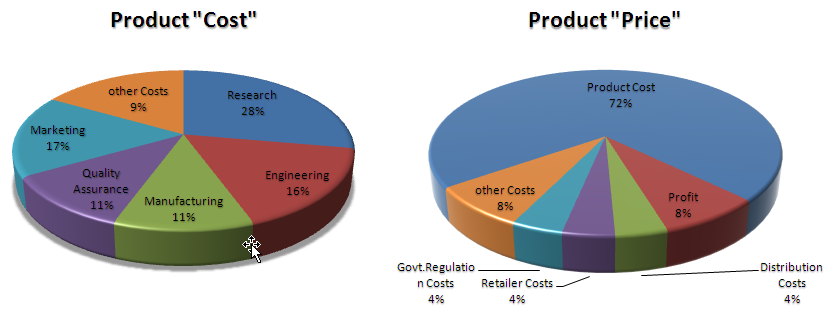In our four part series dedicated to new product developers, innovators and inventors, we explore the 8 top considerations when developing a new product. So far we have covered:
- Product Development Costs
- Distribution Channels
- Inventory and Startup Financing Capital
Educating the Masses
How will you announce the arrival of your new product to the world? Magazines? PR campaign? Put an ad in the paper? Direct Response Television (DRTV) is a great but often expensive form of advertising and one of the best ways to demonstrate a new application or use as well as building brand equity. It’s great to have a video on your web site but again, how will you drive viewers and a following?
For Part Three we turn to renown and widely respected author and expert, Jim DeBetta, who has led firms such as TV Goods, Rymax Marketing and Carson Optical. As one of the foremost authorities in helping inventors and consumer product entrepreneurs develop and launch their products through infomercials and retail store placement, Jim is widely sought as a guest speaker at many nationally recognized events.
BaySource Global: What are emerging methods, tactics and strategies for introducing new products in the public domain?
Jim DeBetta: “DRTV can be effective to quickly brand a product but the costs are very high. Internet marketing techniques offer the least costly and potentially most effective way to introduce new products – whether your own or on other’s sites. Its also critical to have a comprehensive social media campaign that can include Twitter, Facebook, Pinterest and others. This can be a fast and effective way to reach many people while allowing them to provide instant feedback.”
BSG: What are overlooked tactics for getting a product into retail distribution?
JD: “Using a broker or rep is always a good idea as they have the contacts and experience to get products introduced to retail buyers. Again, it’s also a good idea to start by marketing your products online. Having a powerful internet marketing plan is a great way to start and often not seriously pursued. Also, using distributors to sell your products to mom and pops and even larger chains can be effective as they already sell other products to their customers and can offer yours as well. You may make less working with a “middle man” but the sales you achieve more than compensates for it.”
Price vs. Value
In the initial phase of a product’s life-cycle there will likely not be the scale (volume) to drive down production cost. Unless you can convince consumers they should pay a premium price point at retail break even may be longer off than you expect. Plus, buyers will tell you whether your SRP (Suggested Retail Price) is in line with their category.
BSG: Where do inventors miss the mark on price vs. value, either in over pricing or under estimating suggested retail price? (Retail sometimes dictates a cost not attainable in the startup phase due to lower initial volumes at manufacturing)
JD: “Many inventors often feel their products are worth more than they are and so they price them at too high of a retail. Also, they often do not offer enough margin for the retailer…So instead of them offering a cost of lets say 10.00 to a retailer when the MSRP is 20.00, they offer them a price of 12-13 dollars which does not give the retailer enough margin. It’s critical for inventors and startups to make money but they cannot get too greedy and have to understand the margin requirements of big retailers
Jim DeBetta is President of DeBetta Enterprises and is a mentor, coach and consultant. He is the author of The Business of Inventing and offers Group Coaching courses for inventors. Jim can be reached at jim@jimdebetta.com Facebook-Get Retail Ready or 770-826-2606.
David Alexander is founder of Baysource Global specializing in contract manufacturing, new product development and distribution. David can be reached at david.alexander@baysource.net or 813-251-4184.








Follow Us